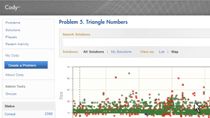Enhancing Learning by Integrating Theory and Practice | MathWorks Research Summit
From the series: MathWorks Research Summit
Silvio Simani, University of Ferrara
This talk aims to provide some guidelines for improving the quality of the teaching approaches used in engineering curricula with basic and elective courses for automatic control for B.S. and M.S. degrees. In particular, through teachers’ learned lessons and experiences acquired after several years of teaching, this talk will show how to enhance learning effectiveness by exploiting three main tools. First, teaching activities should be supported by a learning-by-doing approach, which enhances the development of theoretical and practical issues proposed to the student at the same time. On the other hand, the use of real and realistic examples taken from different engineering backgrounds helps to engage students and attract their interest toward difficult theoretical activities. Moreover, the design of proper manual and semiautomated procedures that are tailored to the considered application examples drives the students to learn the engineering approach to solve practical problems.
The examples considered in the talk regard the design of lead and lag control networks by using the frequency requirements of Control System Toolbox™, as well as the derivation of transfer functions and state-space models from physical models by means of Symbolic Math Toolbox™. It is known that the design of control networks can be performed using empirical approaches or semiautomated methodologies. To this aim, the talk shows that the synthesis of a lag network can be easily achieved from the required phase margin by means of the use of a Bode diagram and through the analysis of a proper frequency function. This frequency function integrates the feasibility conditions for the existence of the control network and the fulfillment of the required phase and gain margins at a given crossover frequency. The design is based on inversion formulas that provide the required phase alteration and the attenuation given by the control network. Also, the design of PID standard controllers can be enhanced by the comparison of techniques relying on the well-established Ziegler-Nichols relations, whose performances in some cases can be outperformed by the automatic tuning procedures implemented in the MATLAB® and Simulink® environments. Moreover, real and realistic examples can improve the learning of advanced control techniques based, for example, on neural networks and fuzzy systems, which can be used for developing supervision and adaptive solutions for real-time implementations.
Finally, the effectiveness of the proposed teaching and learning tools is analyzed and assessed via the results provided by a national database (VALMON) that collects the general evaluation of the quality of the university courses, which is also related to teachers’ ability and effectiveness to transfer knowledge to students. This feedback is collected twice a year from the students for each course that has at least six students, before exams.
Published: 17 Mar 2023





